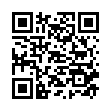|
This article is cited in 7 scientific papers (total in 7 papers)
Computer science
Candidate for practical post-quantum signature scheme
N. A. Moldovyan, A. A. Moldovyan
St. Petersburg Federal Research Center of the Russian Academy of Sciences, St. Petersburg Institute for Informatics and Automation of the Russian Academy of Sciences, 39, 14 Line, St. Petersburg, 199178, Russian Federation
Abstract:
A new criterion of post-quantum security is used to design a practical signature scheme based on the computational complexity of the hidden discrete logarithm problem. A $4$-dimensional finite non-commutative associative algebra is applied as algebraic support of the cryptoscheme. The criterion is formulated as computational intractability of the task of constructing a periodic function containing a period depending on the discrete logarithm value. To meet the criterion, the hidden commutative group possessing the $2$-dimensional cyclicity is exploited in the developed signature scheme. The public-key elements are computed depending on two vectors that are generators of two different cyclic groups contained in the hidden group. When computing the public key two types of masking operations are used: $i)$ possessing the property of mutual commutativity with the exponentiation operation and $ii)$ being free of such property. The signature represents two integers and one vector $S$ used as a multiplier in the verification equation. To prevent attacks using the value $S$ as a fitting element the signature verification equation is doubled.
Keywords:
digital signature, post-quantum cryptoscheme, public key, hidden logarithm problem, finite non-commutative algebra, associative algebra.
Received: January 27, 2020
Accepted: October 23, 2020
Citation:
N. A. Moldovyan, A. A. Moldovyan, “Candidate for practical post-quantum signature scheme”, Vestnik S.-Petersburg Univ. Ser. 10. Prikl. Mat. Inform. Prots. Upr., 16:4 (2020), 455–461
Linking options:
https://www.mathnet.ru/eng/vspui471 https://www.mathnet.ru/eng/vspui/v16/i4/p455
|

|




 Contact us:
Contact us: Terms of Use
Terms of Use
 Registration to the website
Registration to the website Logotypes
Logotypes








 Citation in format
Citation in format 
